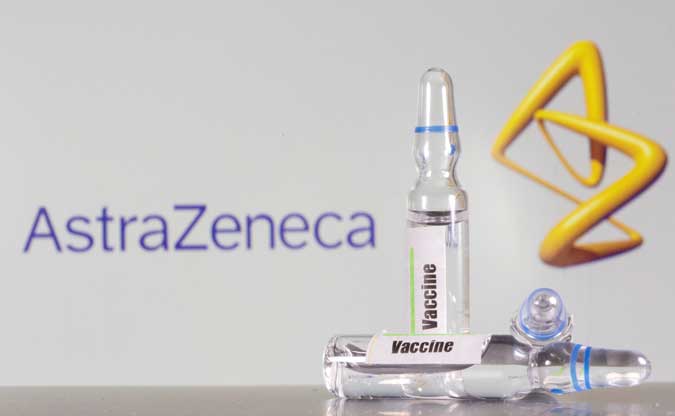US is ready to lead world again — Biden
WILMINGTON, Del. — President-elect Joe Biden said on Tuesday the United States will be “ready to lead” again on the global stage, turning the page on Republican President Donald Trump’s “America First” policies as he pledged to work together with the nation’s allies.
Introducing his foreign policy and national security team, the Democratic former vice president signaled he intended after taking office on Jan. 20 to steer the United States away from the unilateralist nationalism pursued by Mr. Trump.
Mr. Biden also signaled that two former, more liberal, rivals for the Democratic presidential nomination, Senators Bernie Sanders and Elizabeth Warren, were not under consideration for Cabinet appointments, saying he needed their votes in the closely divided Senate.
Mr. Trump over four years unsettled many US allies, in Europe and elsewhere, with an antagonistic approach toward the NATO alliance and trade relations, abandonment of international agreements and warm relationships with authoritarian leaders. Mr. Biden said his team, which includes trusted aide Antony Blinken as his nominee for US secretary of state, would shed what the president-elect described as “old thinking and unchanged habits” in its approach to foreign relations.
“It’s a team that reflects the fact that America is back, ready to lead the world, not retreat from it, once again sit at the head of the table, ready to confront our adversaries and not reject our allies, ready to stand up for our values,” Mr. Biden said at the event in his hometown of Wilmington, Delaware.
The world is much changed since Democrats were last in the White House four years ago. China is on the rise and emboldened, Russia has sought to further assert its clout, US influence has waned as it pulled out of various accords and American moral authority has been dented by turmoil at home.
US foreign policy under a Mr. Biden administration is likely to take more of a multilateral and diplomatic approach aimed at repairing Washington’s relationships with key allies and pursuing new paths on issues such as climate change.
His promise to embrace alliances, including in the Asia-Pacific region, follows a deterioration in bilateral ties between the US and China, the world’s top two economies, that has triggered comparisons with the Cold War.
This final year of Mr. Trump’s administration was marked by frequent China-bashing as the two powers sparred over China’s handling of the coronavirus pandemic, deteriorating freedoms in Hong Kong and territorial issues in the South China Sea.
Mr. Trump has told allies he plans to pardon his former national security adviser Michael Flynn, who pleaded guilty to lying to the FBI during the investigation into Russian meddling in the 2016 presidential election, a source familiar with the situation said on Tuesday.
The source said Mr. Trump could still change his mind on the planned pardon, which was first reported by Axios.
TRANSITION MOVES FORWARD
Mr. Biden has moved swiftly to assemble his team and make Cabinet choices after defeating Mr. Trump, who has waged a flailing legal battle to try to overturn the results, falsely claiming the election was stolen through widespread voting fraud.
Mr. Biden said his team had been able to begin coordinating with the Trump administration on national security, the coronavirus pandemic and vaccine distribution plans since it got the green light on Monday for formal transition efforts.
“We’re going to not be so far behind the curve as we thought we might be in the past,” Mr. Biden said in an interview with NBC News. “There’s a lot of immediate discussion, and I must say, the outreach has been sincere.”
Critics have said Mr. Trump’s refusal to accept the results undercut the incoming administration’s ability to combat the intensifying coronavirus pandemic that has killed about 259,000 Americans and thrown millions out of work.
The White House on Tuesday gave the go-ahead for Mr. Biden to start receiving the president’s daily intelligence briefing. Mr. Biden said he had not gotten one yet but expected it regularly.
Asked by NBC about possibly nominating Sanders or Warren to his Cabinet, Mr. Biden said nothing was off the table but signaled they might be more needed in the Senate, where the party in power will govern by a razor-thin margin.
Two runoffs in Georgia on Jan. 5 will determine which party has a Senate majority. Democrats also saw their majority in the House of Representatives narrow in the Nov. 3 election.
“Taking someone out of the Senate, taking someone out of the House, particularly a person of consequence, is really a difficult decision,” Mr. Biden said. “I have a very ambitious, very progressive agenda, and it’s going to take really strong leaders in the House and Senate to get it done.”
During his presentation with his national security team, Mr. Biden urged the Senate to give his nominees who require confirmation by the chamber “a prompt hearing” and expressed hope he could work with Republicans “in good faith.”
“Let’s begin that work … to heal and unite America as well as the world,” Mr. Biden added.
Some Republican senators indicated, however, they may be prepared to stand in the way of his Cabinet appointments. Marco Rubio, a Foreign Relations Committee member, wrote on Twitter that Mr. Biden’s Cabinet picks “will be polite & orderly caretakers of America’s decline.”
Pennsylvania became the latest pivotal state on Tuesday to certify that Mr. Biden had won. The Nevada Supreme Court on Tuesday also confirmed Mr. Biden had won the state, sending the results to Nevada’s Democratic governor for final certification. — Reuters






